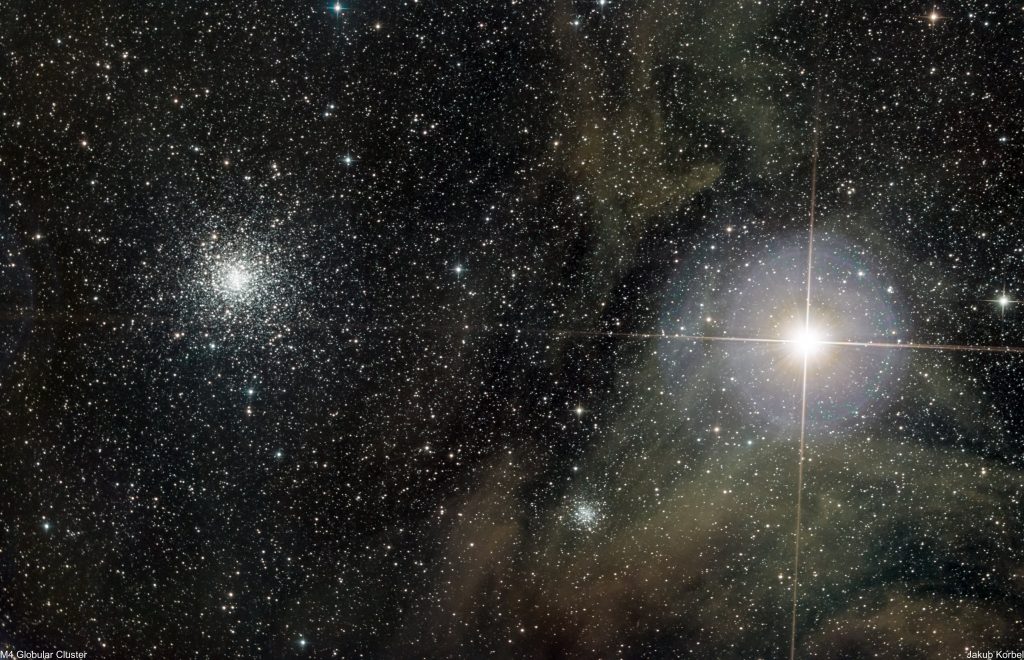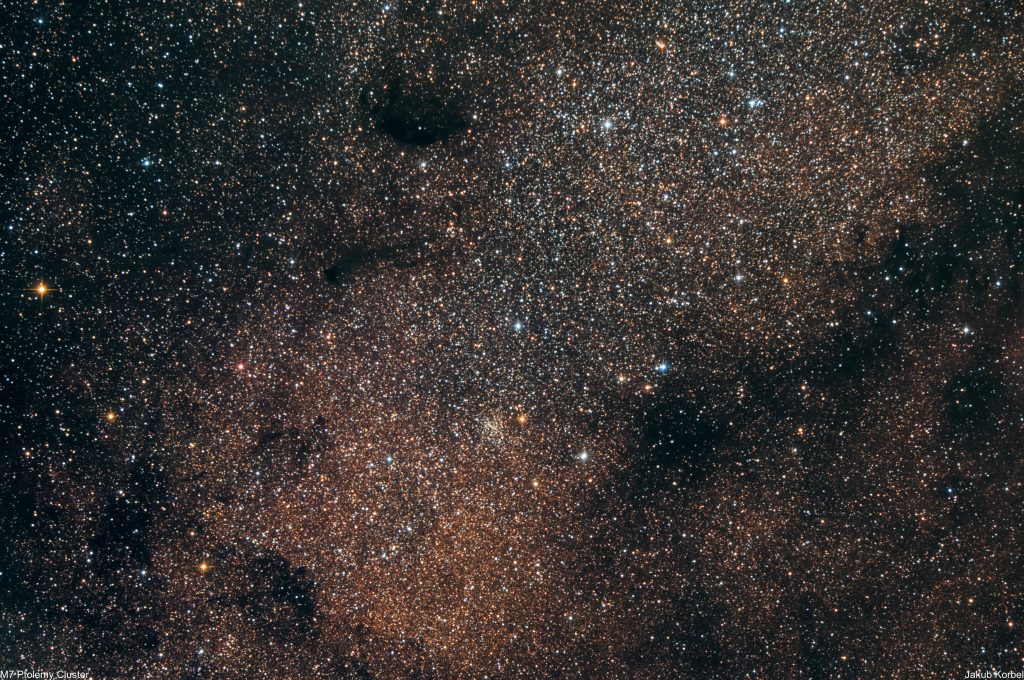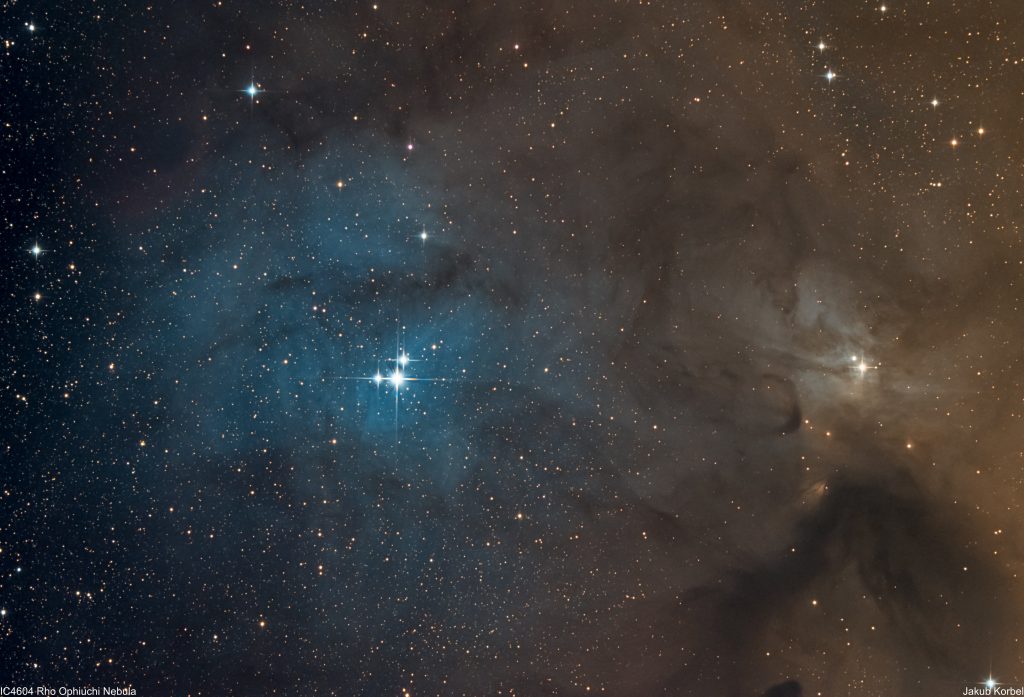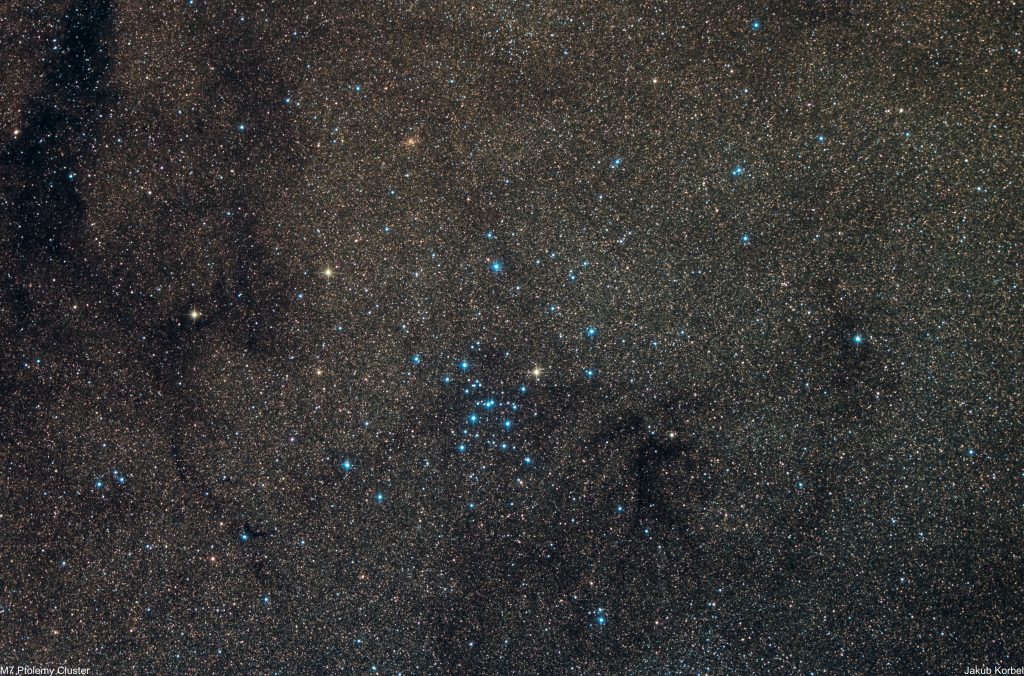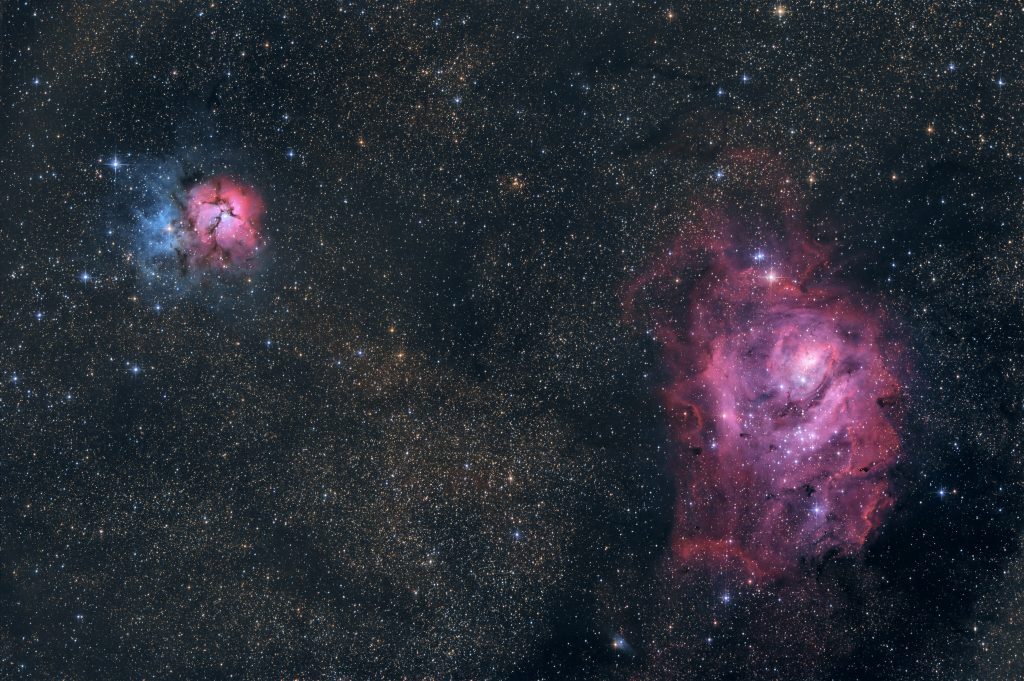This year was a special year. The pandemic outbreak ruined my first attempt of chasing the darkness on the Canary Islands in May. I didn’t give up and as soon the restrictions were released, I purchased plane tickets to Fuerteventura again. We rented a house via AirBnB on the south side of the island, in the middle of nowhere, where the light pollution was minimal (measured SQM 21.2).
The island lies on the 28th parallel, which makes the core of the Milky Way pretty up in the sky. And this was exactly my primary astrophotographic target. I packed recently astro-modified Canon 6D, nifty-fifty 50 mm f1.8 lens and headed south. The aim was to capture the Antares region together with the core of the Milky Way and in the end, I somehow managed. However, the lens disappointed me a lot, because it suffers from comatic and chromatic aberrations, combined with astigmatism. The stars in the corners are not round, even if the lens is slowed down to f 3.5. I was trying nearly every evening to recapture the Milky Way, but I was fighting with the weather (it was very windy) and with the equipment (polar alignment, shutter release, drained batteries), but I somehow managed to generate at least one decent picture of the desired target. Lessons learned – I need a better 50 mm lens.
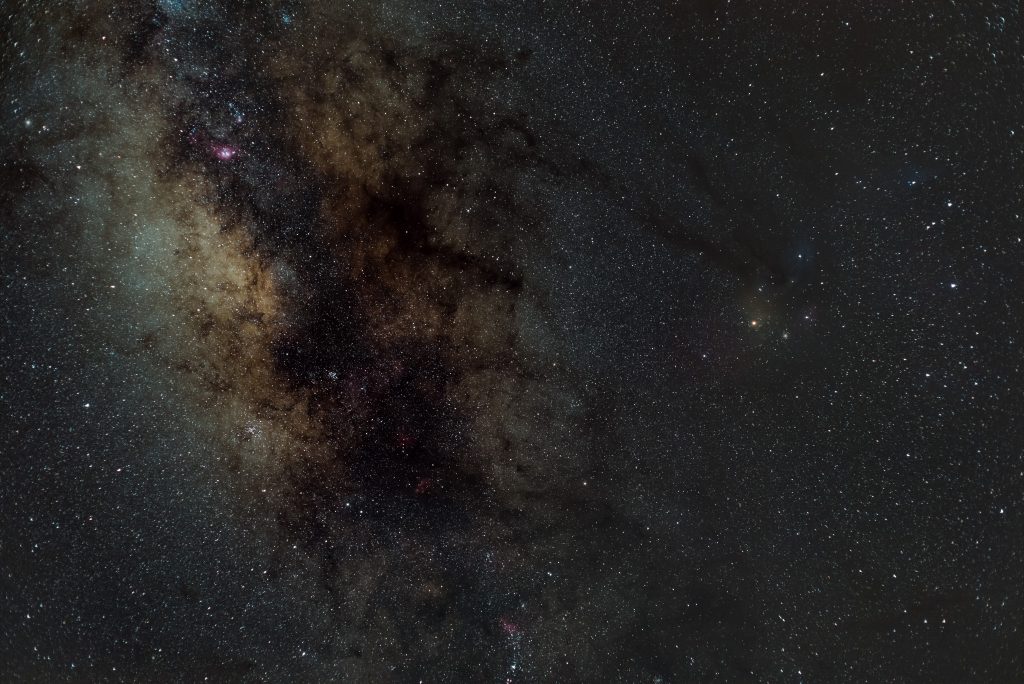
Technical details:
| Lens | Canon EF 50 mm f1.8 |
| F-stop | 2.8 |
| Focal length | 50 mm |
| Mount | Baader NanoTracker |
| Camera | Canon EOS 6D Astro modified |
| Exposure | 14x20s, ISO 1600 |
| Date | 2020-07-22 |
I also packed 150mm Newtonian, together with my new mount Rainbow Astro RS135. This mount is simply excellent and very portable. I still have Avalon M-Zero, but it is significantly heavier, therefore if I travel with Avalon, I have to order a second suitcase and to travel with two suitcases is not that convenient. Rainbow Astro occupies only half of my luggage, so there was a space for some T-shirts. I must say, that the Avalon is a better mount for tracking and there is no need to do a meridian flip, but the portability is for me more important. The primary target was the Lobster nebula, but I managed to capture some DSOs around Antares and in the core of the Milky Way (Lagoon, Trifid, M4, M6, M7, M24, IC4304).

The conclusion: the weather was much better than in La Palma last year. Every night was cloudless, but it was windy. Fortunately not every day, so in the end, it was a quite successful trip.

